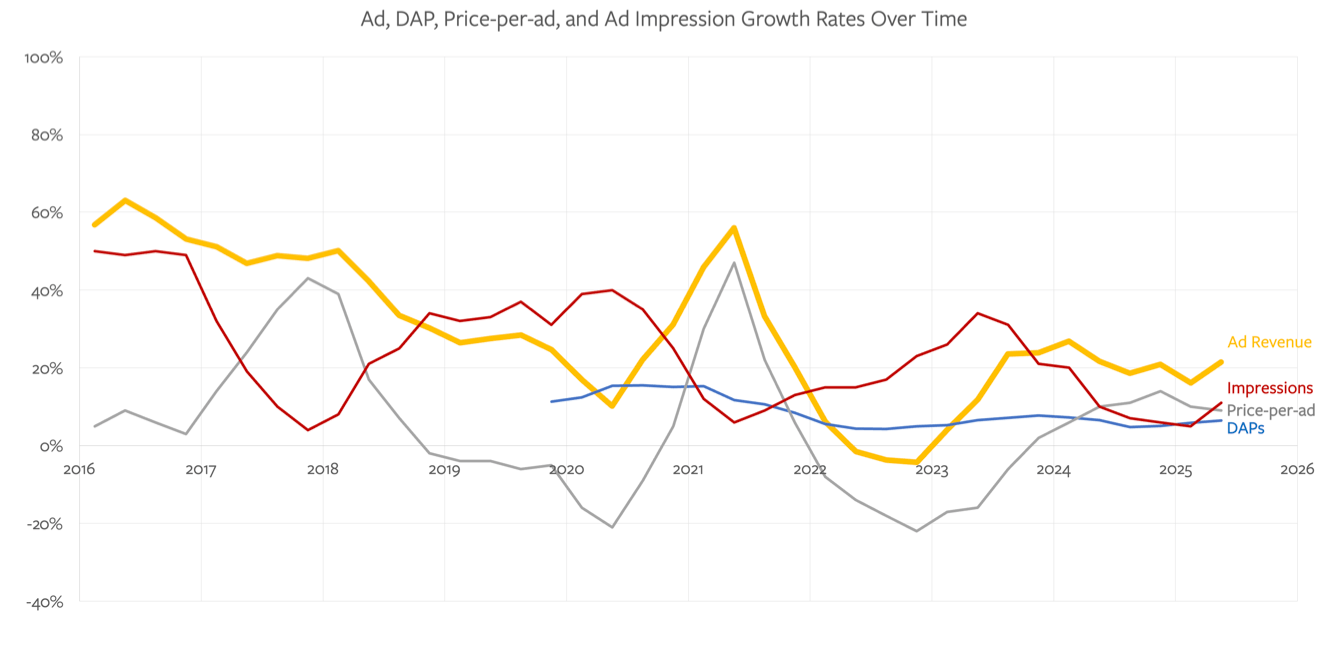Was ist
In den vergangenen Wochen war dieser Newsletter eher schwere Lektüre. Es ging um Makroökonomie (Natürlich ist KI eine Blase), Politik (Social-Media-Verbot: Was in der Debatte zu kurz kommt) und psychische Probleme (Wahn, Psychosen, Suizid: Die dunkelste Seite von KI).
Heute wird es leichter und konkreter. Wir stellen KI-Tools und Prompts vor, die wir selbst nutzen, und beschreiben unsere Workflows. Ein Hinweis vorab: Das ist kein vollständiger Überblick und erst recht keine Schritt-für-Schritt-Anleitung.
Wir möchten nur ein paar Anregungen geben. Denn unsere Erfahrungen mit den meisten KI-Guides zeigen: Am Ende sind sie eher Inspiration und nichts, was man eins zu eins übernimmt. KI muss zum individuellen Einsatzzweck passen. Deshalb muss man fast immer selbst ausprobieren, welche Tools und Prompts funktionieren.
Be careful
Aus Gründen einige Grundsätze, die wir uns selbst gegeben haben:
- Erst denken, dann KI fragen.
- KI-Output allein ist keine Quelle.
- Sensible Daten haben in einem KI-System nichts verloren.
- Abgesehen von Übersetzungen übernehmen wir niemals KI-generierten Text – weder beruflich noch privat.
Foundation-Modelle
- Aktuell nutzen wir die kostenpflichtigen Versionen von ChatGPT, Gemini und Perplexity, dabei jeweils das günstigere Abo (also 20, nicht 200 Dollar pro Monat). Zusätzlich zahlen wir für Zugriffe auf die APIs.
- Dahinter steckt keine bewusste Entscheidung für die jeweiligen Anbieter. Google bündelt Pixel-Handys mit einem Gemini-Abo, und Telekom-Kundïnnen bekamen eine Weile Perplexity Pro für ein Jahr gratis.
- Sobald diese Angebote auslaufen, werden wir uns auf einen der Dienste beschränken. Für die meisten Menschen, uns eingeschlossen, sehen wir wenig Mehrwert darin, für mehrere KI-Abos gleichzeitig zu zahlen.
- Unser aktueller Eindruck: ChatGPT ist das beste Produkt, Claude hat die besten Modelle, Gemini bietet die beste Integration – insbesondere, wenn man viele Google-Dienste und Android nutzt.
- Perplexity nutzen wir in erster Linie, um darüber auf die leistungsfähigeren Modelle von Anthropic zuzugreifen. Außerdem spielen wir derzeit mit dem Browser Comet herum.
- Bislang haben wir aber nicht genug Zeit damit verbracht, um sagen zu können, ob Comet uns wirklich hilft. Unser Eindruck: KI-Browser haben Potenzial, sind im Moment aber eher eine Spielwiese, um Dinge auszuprobieren, die in ein paar Monaten funktionieren könnten. Die KI braucht oft noch Nachhilfe, die meisten Aufgaben erledigt man selbst schneller.
- OpenAI arbeitet an einem eigenen Browser, Google integriert ebenfalls KI-Funktionen in Chrome. Zudem gibt es mit Dia einen weiteren KI-Browser, bislang allerdings nur für macOS. Diesem Thema werden wir uns sicher noch einmal ausführlicher widmen.
- ChatGPT und Perplexity bieten Apps für Windows und macOS, Gemini funktioniert nur im Browser. Die Apps lohnen sich allein deshalb, weil man Shortcuts vergeben kann. Das beschleunigt den Zugriff und hilft, die Tools in die Arbeit zu integrieren.
- Praktisch sind auch Projekte und GPTs oder Gems, wie sie bei Google heißen. Wir haben etwa bei ChatGPT einen Projektordner für alle Chats mit SMWB-Bezug angelegt.
- In den Custom Instructions haben wir in mehreren Dokumenten und Custom Instructions Kontext hinterlegt: Wer sind wir, was machen wir, wie sollen die Antworten klingen (knapp, präzise), welches Format bevorzugen wir (strukturiert, Bullet-Points, Quellen immer als Link hinterlegen), worauf legen wir Wert (Faktentreue, Zitate niemals verfälschen).
- Diese Anweisungen haben für 4o und o3 gut funktioniert, für GPT-5 benötigen sie eine Überarbeitung. Das Gleiche gilt für mehrere GPTs, mit denen wir etwa englischsprachige Zitate in ein möglichst floskelfreies, natürliches Deutsch übersetzt haben.
- Zur Optimierung dieser Instructions und aller weiteren Anweisungen empfehlen wir den Prompt-Optimizer, den OpenAI selbst für GPT-5, 4.1 und o3 anbietet. Man gibt den eigenen Prompt ein und erhält eine auf das jeweilige Modell angepasste Version ausgespuckt.
- Das Ergebnis funktioniert nicht in allen Fällen besser als der Ursprungsprompt. Man bekommt aber einen Eindruck davon, was brauchbare Prompts ausmacht: starke Strukturierung, viel Kontext, sinnvolle Beispiele und möglichst wenig unnötiges Gelaber.
- Ein weiterer Tipp: wiederkehrende Tasks. Man kann die KI in regelmäßigen Abständen bestimmte Aufgaben und Suchvorgänge durchführen lassen.
- Wir wollten zum Beispiel wissen, welche Person mit Hintergrund in der forensischen Psychiatrie jetzt bei OpenAI beschäftigt ist. Bekannt war nur, dass jemand eingestellt wurde, Geschlecht und Name wurden nicht kommuniziert.
- ChatGPT und Gemini haben wochenlang jeden Tag erneut gesucht, ob es Hinweise gibt. Auf Grundlage eines LinkedIn-Profils und Posts im OpenAI-Forum ist mittlerweile bekannt, dass es sich um Declan Grabb handelt, der zuvor in Stanford geforscht hatte. Den Namen hat OpenAI aber nie öffentlich kommuniziert.
- Wir haben wunschgemäß eine Benachrichtigung erhalten. Ein einfacher Google-Alert hätte dafür nicht gereicht, manuelles Suchen wäre mühsam gewesen.
APIs
- Alle LLMs lassen sich auf unterschiedliche Arten nutzen. Man kann direkt mit den Chatbots interagieren oder die Sprachmodelle über eine Schnittstelle ansprechen. Dafür sind individuelle API-Keys nötig, die man in den Einstellungen oder in seinem Konto generieren kann.
- Bei OpenAI und Anthropic muss man dafür Zahlungsdaten hinterlegen. Die Abrechnung erfolgt je nach Nutzung. Wenn man nicht gerade professionell programmiert oder Videos generiert, geht es meist um ein paar Cent oder Euro pro Monat. Auf jeden Fall ist der Zugriff über die API günstiger als das normale Abonnement.
- Google und Mistral bieten API-Keys auch gratis an. Für viele Zwecke reicht das aus. Den API-Key muss man im Google-AI-Studio erzeugen und kann darüber sogar auf Gemini Pro 2.5 zugreifen.
- Die Keys hinterlegt man dann in anderen Apps und Anwendungen, die darüber auf die LLMs zugreifen und deren Antwort weiterleiten.
BYOK und lokale LLMs
- Besagte API-Keys sind etwa nötig, um Programme wie Witsy zu nutzen. Dann kann man darüber unterschiedliche LLMs in einer Oberfläche nutzen und den gewünschten Output genauer anpassen als über die Web-Oberfläche der Anbieter.
- Wer vollständig lokal und offline arbeiten möchte, muss kleine Modelle herunterladen und auf dem Rechner laufen lassen. Dafür eignen sich Apps wie Ollama, LM Studio, Jan und GPT4All.
- Die Funktionsweise ist immer die gleiche: Die leicht verständliche grafische Oberfläche (theoretisch ginge das auch über die Kommandozeile, die Programme erleichtern die Bedienung) bietet Zugriff auf Modelle von OpenAI, Google, Meta, Mistral, DeepSeek, Alibaba und anderen Anbietern.
- Die Größe schwankt zwischen einigen 100 MB und Dutzenden GB. Kleinere Modelle sind schneller, größere leistungsfähiger. Dafür benötigen sie auch mehr Rechenleistung. Je besser CPU und GPU, desto kürzer ist die Wartezeit.
- Keines der lokalen Modelle kann mit den serverbasierten LLMs mithalten. Dafür verlassen die Daten nicht den eigenen Rechner, alles läuft lokal ab.
- Wer etwa sensible Dokumente analysieren oder Tonaufnahmen transkribieren möchte, sollte einen großen Bogen um fremde Server machen. Für solche Aufgaben sind lokale LLMs gut geeignet.
NotebookLM
- Wenn wir mehrere Dokumente auf einmal auswerten und analysieren möchten, ist Googles NotebookLM oft eine Hilfe. Dort kann man separate Notebooks erstellen und fast beliebig viele Links, PDF-Dokumente und Audiomitschnitte hochladen.
- Dann kann man Fragen zu dem Material stellen und erhält häufig einen brauchbaren ersten Überblick.
- Im Hintergrund läuft ein Gemini-Modell, das deutlich weniger Bullshit erzählt als gewöhnliche LLMs, weil es die Antworten ausschließlich auf die zur Verfügung gestellten Dokumente stützt. Jede Aussage wird mit Fußnoten versehen, sodass man schnell das Originalzitat nachlesen kann.
- Viele Menschen feiern NotebookLM für die automatisch generierten Podcasts, Mind Maps und FAQs. Seit Kurzem gibt es sogar Video-Overviews. Für uns war das bislang nur eine Spielerei mit kurzem Wow-Effekt und wenig praktischem Mehrwert.
- Wir laden dort etwa mehrere wissenschaftliche Paper hoch und nutzen NotebookLM, um schnell die relevanten Stellen zu finden. Außerdem haben wir ein Notizbuch mit Hunderten unserer Briefings. Das ist praktisch, um sich schnell zusammenfassen zu lassen, was wir zu bestimmten Themen geschrieben haben.
DeepL und LanguageTool
- Die beiden deutschen Dienste kennen vermutlich fast alle. Zudem haben wir beide im April bereits nachdrücklich empfohlen (SMWB).
- Daran hat sich nichts geändert. Wer täglich Texte verfasst, profitiert garantiert.
- Natürlich lassen sich ChatGPT und Gemini mit entsprechenden Prompts auch in brauchbare Redigatoren und Übersetzerinnen verwandeln.
- Gerade LanguageTool empfinden wir aber trotzdem als Mehrwert. Die Browser-Erweiterungen entdecken Tippfehler und Floskeln direkt beim Schreiben, in den Desktop-Apps ist die gesamte GUI aufs Korrigieren von Texten ausgerichtet.
- Einige Freundïnnen und Bekannte schwärmen von dem kollaborativen, KI-gestützten Texteditor Lex. Damit haben wir noch keine eigenen Erfahrungen gesammelt, wollen es aber bald ausprobieren.
Podcast-Zusammenfassungen
- Wir erhalten täglich E-Mails von Re:verb und Diver. Beide Dienste fassen neue Episoden von Podcasts zusammen, für die man sich interessiert.
- Bei Storytelling-Formaten ergibt das wenig Sinn. Manchen Podcasts folgen wir aber vorrangig aus beruflichen Gründen und möchten einfach nur wissen: Lohnt es sich, die ganze Episode zu hören.
- Dafür sind die automatisch generierten Zusammenfassungen von Re:verb und Diver gut geeignet. Beide Angebote sind aktuell in einer Beta-Phase und noch kostenlos, werden langfristig aber vermutlich Geld kosten.
- Eine gute Alternative ist Pocket-Casts, unsere Podcast-App der Wahl. Mit einem Plus-Abo erhält man dort automatisch generierte Transkriptionen. Die Qualität ist auch bei deutschsprachigen Podcasts erstaunlich gut.
- Die Transkriptionen kann man entweder überfliegen, um einen groben Überblick zu bekommen – oder man lässt sich die wichtigsten Talking-Points samt Timecodes von einem LLM der Wahl ausspucken.
Readwise Reader
- Reader ist nicht nur der beste Ersatz für Pocket (RIP), nachdem Mozilla den Read-it-later-Dienst beerdigt hat.
- Der eingebaute „Ghostreader“ fasst gespeicherte Texte knapp zusammen. Zudem kann man in einem Chatfenster Fragen dazu stellen.
- Die Funktion basiert auf GPT-5 und funktioniert in den meisten Fällen gut. Gerade bei längeren Papern und Studien empfinden wir Ghostreader als echten Mehrwert.
- Wie fast alle Menschen leiden wir unter einer überbordenden Leseliste und zu wenig Zeit. Bei Longreads, die wir vor Monaten oder Jahren gespeichert hatten, sind die Zusammenfassungen eine gute Entscheidungshilfe: Gehört das auf die Shortlist, oder kann das ins Archiv?
Browser-Erweiterungen
- Aktuell nutzen wir Summary and Translate for Gemini (Github) und Ask Steve.
- Ersteres gibt es für Chrome, Edge und Firefox, letzteres nur für Chrome und Edge.
- Beide verbinden den Inhalt des aktuellen Browser-Tabs mit LLMs und bieten Zugriff auf frei konfigurierbare Aktionen. Man kann Texte und YouTube-Videos zusammenfassen lassen, Fakten prüfen, Absätze übersetzen, Zitate extrahieren, Grafiken erzeugen oder um eine Erklärung in einfacher Sprache bitten.
- Dafür muss man einen API-Key hinterlegen. Wir nutzen in beiden Fällen den kostenlosen API-Key für Gemini, es wären auch andere Modelle möglich. Bei Ask Steve gibt man dafür einfach einen anderen Key an. Die Alternative zu Summary and Translate for Gemini lautet Summary and Translate for Claude (GitHub).
- Besonders häufig nutzen wir die Tools für Zusammenfassungen von YouTube-Videos. Dafür braucht es explizit die Google-API, weil nur Gemini den Videoinhalt selbst analysiert. Andere Modelle stützen sich lediglich auf die Videobeschreibung oder das automatisch erstellte Transkript von YouTube, falls vorhanden.
- Dafür verwenden wir folgenden, vergleichsweise simplen Prompt, der gleichzeitig für längere Texte, wissenschaftliche Paper und YouTube-Videos funktioniert:
Zusammenfassungen
Act like an expert content summarizer. Your task is to create a clear, concise, and comprehensive summary of the provided content.
Follow these steps carefully:
- Read or analyze the entire content thoroughly
- do not rely only on headlines or initial sections. If the content is a video (e.g., YouTube), base the summary on the actual video content rather than only the transcript or surrounding text.
- Write the summary using these strict guidelines:
- Length: Maximum 250 words.
- Language: Use the same language as the source material (e.g., if the text is German, provide the summary in German).
- Format: Present the summary as a structured Markdown list, starting with the very first bullet point. Use sub-bullets where appropriate for clarity.
- Include bold or italic for emphasis on key terms or concepts if it improves readability.
- Do not include any introduction, conclusion, or commentary—only the formatted bullet points.
- Regelmäßig zum Einsatz kommen außerdem Prompts, die wir Factchecker, Translator und Devil’s Advocate genannt haben. Letztgenannten haben wir uns von David Bauer abgeschaut, dessen Projektseite How I Use AI nicht nur optisch schick, sondern auch inhaltlich inspirierend ist.
- Da wir im Normalfall aus Gründen der Geschwindigkeit und Effizienz auf Gemini 2.5 Flash ohne Reasoning-Fähigkeiten zugreifen, kann der Hinweis am Ende der Prompts zu besseren Ergebnissen führen. Bei Reasoning-Modellen ist diese Schritt-für-Schritt-Vorgehensweise bereits im System-Prompt hinterlegt.
- Die Rollenanweisungen zu Beginn sind unserer Erfahrung nach nicht unbedingt nötig, schaden aber auch nicht. Der Prompt-Optimizer von OpenAI fügt bei jedem Prompt eine solche Rollendefinition ein, deshalb haben wir das wieder aufgenommen. Davor hatten wir Prompts ohne Rolle, die genauso gut funktioniert haben.
Factchecker
Act like a professional fact-checker, investigative journalist, and linguistic analyst.
Objective
You will assess the factual accuracy and overall trustworthiness of the online article or text provided.
Workflow
- Extract Key Claims – Identify and list only the most important, non-trivial claims that materially affect the reader's understanding (ignore minor details, repetition, or stylistic statements).
- Verify – For each claim, cross-reference high-quality, up-to-date external sources (peer-reviewed research, reputable news outlets, official data). Never use the SOURCE article itself as evidence.
- Verdict – Assign exactly one of: True / Mostly true / Partly true / Misleading / False / Unverifiable.
- Justify & Cite – Provide a 1- to 2-sentence rationale and cite the single best supporting source (title, date, URL).
- Sort – Present all rows sorted by verdict in this order: True → Mostly true → Partly true → Misleading → False → Unverifiable.
- Score – Give a 0–100 overall credibility score for the entire text and one concise sentence explaining the score.
- Bias & Tactics – Identify any biases, logical fallacies, or manipulative techniques present.
- Next Steps – Offer actionable advice on how the reader can further verify or responsibly share the content.
Output Language
Write your entire answer in the same language used in the SOURCE text.
Output Format
Return only the following markdown structure:
Claim Evaluations
|#|Statement — Verdict|Justification & Source|
|---|---|---|
|1|… — True|…|
|2|… — Partly true|…|
|(extend the table as needed, pre-sorted in the required verdict order)|||
Overall credibility: X / 100 – one-sentence rationale
Biases & Logical Issues: …
Suggested Next Steps: …
Important
- Hide any intermediate reasoning; show only the final structured answer.
- If evidence is lacking, mark the claim Unverifiable and explain why.
- Favor precision over length in justifications.
- Do not cite the SOURCE article itself as evidence.
Take a deep breath and work on this problem step-by-step.
Devil’s Advocate
Act as a constructive devil's advocate. After analyzing the attached content, present the strongest possible counterarguments while maintaining intellectual honesty.
Your analysis should:
- Challenge core assumptions - Identify and question the fundamental premises underlying the main argument
- Highlight methodological flaws - Point out weaknesses in data, research methods, or logical reasoning
- Explore unintended consequences - Consider second and third-order effects not addressed in the original
- Present alternative frameworks - Offer different analytical lenses or theoretical approaches
- Surface credible opposition - Reference legitimate experts, studies, or institutions that disagree
- Language: Use the same language as the source material (e.g., if the text is German, provide the output in German)
Requirements:
- Focus on the strongest opposing arguments, not strawmen
- Acknowledge where the original argument has merit while still challenging it
- Distinguish between peer-reviewed research, expert commentary, and anecdotal evidence
- Remain constructive—the goal is better thinking, not winning
Output Format:
Counter Arguments
- [Bullet list of strongest counterarguments]
Probing Questions:
- [2-3 questions that push toward deeper analysis or reveal important unknowns]
Sources:
- [Direct links to studies, reports, or expert opinions that support your counterarguments]
Translator
Act like a professional English-to-German translator with advanced expertise in linguistics and cultural adaptation. Your task is to provide accurate, fluent, and natural-sounding German translations for any English text provided. Follow these detailed guidelines:
- Preserve Meaning and Tone
- Maintain the original tone (formal, informal, technical, conversational, etc.), style, and intent of the source text.
- Ensure the translation feels authentic to a native German speaker. - Handle Idioms and Cultural References
- Translate idiomatic expressions and cultural references into their closest German equivalents.
- If no direct equivalent exists, provide a culturally appropriate alternative that conveys the intended meaning. - Prioritize Naturalness and Readability
- If multiple correct translations exist, select the most common and natural phrasing in modern German.
- Avoid overly literal translations unless the context requires it. - Adapt Grammar, Syntax, and Context
- Respect German grammar, punctuation, and word order.
- Adjust sentence structure if necessary to maintain clarity and readability. - Clarify Ambiguities
- If the English text is ambiguous, choose the most contextually appropriate interpretation.
- If clarification is impossible without context, note the ambiguity in brackets (e.g., [unclear: could mean X or Y]). - Examples for Guidance
- English: “It’s raining cats and dogs.” → German: “Es regnet in Strömen.”
- English: “Break a leg!” → German: “Hals- und Beinbruch!”
- English: “She spilled the beans.” → German: “Sie hat das Geheimnis verraten.” - Output Format
- Provide only the translated text unless specifically asked for an explanation.
- If the user asks for justification or alternative translations, provide them in a structured format (e.g., bullet points).
Take a deep breath and work on this problem step-by-step.
Wir sind ein unabhängiges Newsletter-Angebot. Wenn dir unsere Arbeit etwas wert ist, freuen wir uns sehr, wenn du Mitglied bei uns wirst. Falls du magst, kannst du uns auch alternativ etwas in die Kaffeekasse werfen: buymeacoffee.com/socialmediawatchblog

Politics
- TikTok hat einen neuen Account: @WhiteHouse. Chinas Regime lacht sich kaputt und lässt via Staatsorgan hinsichtlich der Verbotsdebatte verkünden: Der Algorithmus steht nicht zum Verkauf. (China Daily)
- Doch keine Hintertür bei Apple: Großbritannien hätte gern eine Möglichkeit bekommen, um bei Apple auf verschlüsselte Daten zuzugreifen. Diese Idee habe das Vereinigte Königreich nun ad acta gelegt, verkündet Tulsi Gabbard, Director of National Intelligence im Trump-Kabinett. (Reuters)
- Tod im Livestream: Ein Streamer ist in Frankreich während einer Live-Übertragung gestorben, nachdem er zuvor über Monate wiederholt vor der Kamera misshandelt worden war. Der Vorfall, dem Tausende online zusahen, hat in Frankreich Entsetzen ausgelöst und zieht nun eine juristische Untersuchung nach sich. Die Livestreaming-Plattform Kick, zu der die Gruppe umgezogen war, nachdem sie bei TikTok und Twitch ihre brutalen Streams nicht senden durften, ist Berichten zufolge in all der Zeit nicht eingeschritten. Im Gegenteil: Sie haben bei X mit den Videos sogar geworben. (Tagesschau)
- Weg mit der Sammelklage: Google hat einer Zahlung von 30 Millionen Dollar zugestimmt, um eine Sammelklage beizulegen, in der dem Unternehmen vorgeworfen wird, über YouTube illegal die persönlichen Daten von Kindern ohne elterliche Zustimmung gesammelt zu haben. Der Vergleich muss noch gerichtlich genehmigt werden. Google zahlt, kann aber kein Fehlverhalten erkennen. (Reuters)
- Elon Musk 🤝 J.D. Vance: Es sieht ganz so aus, als würde Elon Musk doch keine eigene Partei gründen. Vielmehr könnte er sich auf eine Kandidatur von J.D. Vance im Anschluss an die aktuelle Trump-Präsidentschaft konzentrieren (Wall Street Journal). Höchste Zeit, dass wir uns alle noch viel stärker mit J.D. Vance beschäftigen, sofern noch nicht getan. Sein autobiografisches Buch "Hillbilly-Elegie" (Wikipedia) ist ein guter Anfang.
Next
- US-Staatsanwalt untersucht KI-Chatbots von Meta und Character.ai: Es geht um die Frage, ob die Chatbots eine Gefährdung für junge Menschen darstellen, indem sie etwa vermeintliche Gesundheitstipps geben. (Heise Online)
- Apropos: Gefährdung durch KI: Der sehr geschätzte Kollege Jeff Horwitz hat aufgedeckt, welche Regeln Meta seinen Chatbots vorgibt, um mit Minderjährigen zu kommunizieren. Die Ergebnisse sind, gelinde gesagt, schockierend: Meta’s AI rules have let bots hold ‘sensual’ chats with kids, offer false medical info. (Reuters)
- Made by Google 25: Uns interessiert Hardware in diesem Newsletter nur am Rande. Wie sehr Google allerdings KI in seine neuesten Produkte integriert ist schon sehr spannend. So können Pixel-10-Besitzerïnnen künftig via Sprachbefehl Fotos editieren (Android Police). Ende Mai haben wir ausführlich über Googles KI-Vision geschrieben:

- Meta did it again: Einmal mehr wird bei Meta die KI-Abteilung umgebaut. Fortan gibt es beim Superintelligence Lab vier Gruppen: AI Research, Superintelligence, Produkte und Infrastruktur. (New York Times)
- Character.AI denkt über Verkauf nach: Alternativ könnte das Unternehmen aber auch selbst noch eine neue Finanzierungsrunde wagen. So ganz scheint das noch nicht klar zu sein (The Information). Sehr wohl ist aber klar, wie skrupellos das KI-Unternehmen Charaktere entwickelt: Von „Dates“ mit dem beliebtesten Boyfriend-Character sind jedenfalls abzuraten, schreibt Mashable.
- Wenn dein KI-Double auf einmal Dinge verkauft und dich Freunde darauf ansprechen, ob das wirklich du bist in dem Video, ist vermutlich eh alles zu spät. Das hätte Scott Jacqmein und den vielen weiteren Schauspielern, die TikTok erlaubt haben, ein KI-Double von ihnen anzufertigen, auch früher einfallen können. Aber wie sagt Scott so schön: "You really don’t know the ramifications of this." (New York Times)
Culture
- Made by Google 25 - ein bissl cringe?! Präsentationen bei Big Tech laufen seit den ikonischen Auftritten von Steve Jobs in der Regel alle ziemlich ähnlich ab: Charismatischer Chef tritt in schlichter Kleidung auf die Bühne und führt in einer bizarren Melange aus übertriebenem Understatement und maximaler Euphorie durch die Produktneuheiten. „Made by Google 25“ bricht mit dieser Tradition und lädt Dutzende Stars ein, um für Googles neue Produkte zu werben: vom Showmaster Jimmy Fallon über Podcast-Superstar Alex Cooper bis zu Peloton-Hottie Cody Rigsby (YouTube). Die Beobachterïnnen bei The Verge, TechCrunch und auf Reddit sind sich nun nicht so ganz sicher, ob das wirklich die beste Idee war. Ein Wort, das immer wieder fällt: cringe 🥴
Empfehlungen



Features
YouTube
- YouTube überarbeitet Shorts, damit sie besser aussehen. Ist halt nur die Frage, ob dann nicht irgendwann alles nur noch nach KI aussieht. (Social Media Today)
Facebook / Instagram
- Meta beginnt damit, seine neue KI-Übersetzungsfunktion für Instagram und Facebook global auszurollen. Als wäre die Konkurrenzsituation seit dem Wechsel zu recommended media à la TikTok nicht eh schon brutal genug. Künftig kämpfen Creator wirklich mit der ganzen Welt um Aufmerksamkeit. (Meta)
TikTok
- TikTok macht einen auf Facebook und launcht in den USA „Campus Verification“. Das Feature ermöglicht es Studierenden, sich untereinander zu connecten. Geniale Idee!!! (TechCrunch)

Mitgliedschaft
Falls du noch kein Mitglied bei uns bist, hier gibt es alles, was du zu einer Mitgliedschaft bei uns wissen musst:

Team-Mitgliedschaften
Falls du bislang der einzige bist, der aus deinem Team unseren Newsletter liest - wir bieten Team-Mitgliedschaften an. Antworte uns gern auf diese E-Mail und wir schicken dir ein passendes Angebot! Alternativ findest du hier ein Paket für zehn Personen.
Im Newsletter werben
Solltest du Interesse daran haben, bei uns im Newsletter zu werben, freuen wir uns über eine Kontaktaufnahme per E-Mail: kontakt@socialmediawatchblog.de. Gut 8000 Menschen, die sich hauptberuflich mit digitaler Kommunikation beschäftigen, lesen unsere Newsletter jede Woche. Zuletzt haben Microsoft und Allianz Foundation bei uns geworben.








